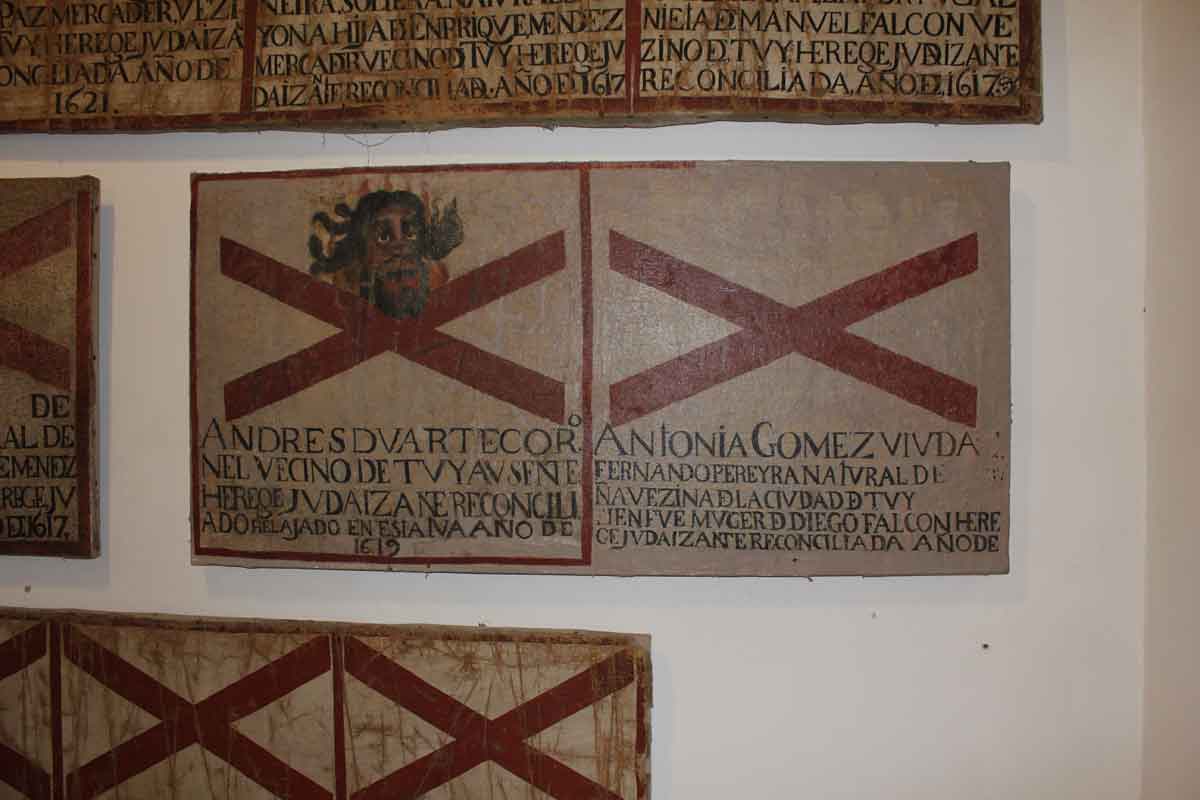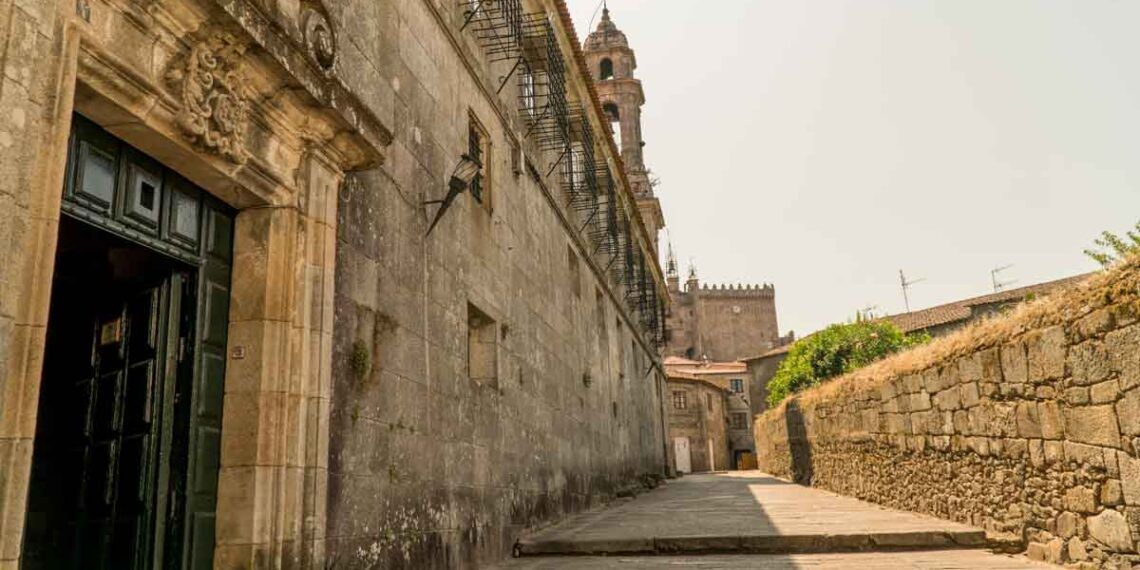Tui rises on the banks of the Miño River with the quiet elegance of its medieval streets and the solemn silhouette of its cathedral. This Galician town, a gateway between Spain and Portugal, holds a chapter of history that speaks softly yet profoundly: its Jewish Quarter. Today, as part of the Jewish Heritage Network Red de Juderías de España, Caminos de Sefarad, Tui invites travelers to rediscover a legacy that shaped its urban soul and cultural identity.
Jewish presence in Tui dates back to the Middle Ages when merchants and artisans settled near the southern walls. Fifteenth-century records mention families who contributed to civic life and financed works in the cathedral, where a carved menorah still rests in the Gothic cloister. This discreet yet eloquent symbol reflects centuries of coexistence and shared artistry, a story intertwined with the Portuguese Way of the Camino de Santiago.
The Jewish community of Tui was far from marginal. It played an active role in the local economy, excelling in trades such as silversmithing and cross-border commerce. Names like Abraan and Jaqó appear in documents as artisans who crafted liturgical pieces for the cathedral itself. This relationship reveals a degree of integration that, though later marked by tension, left material and cultural traces that endure in Galicia’s heritage.
Walking through the old quarter reveals streets such as Ordóñez and Porta da Pía where the synagogue once stood and where references to a mikveh survive in historical accounts. Nearby, the Casa de Salomón recalls the domestic architecture of a prosperous Jewish merchant, its courtyard and proportions echoing a vanished world. Beyond the walls, the Pinarillo Cemetery preserves anthropomorphic tombs and hypogea, silent witnesses to ancient funerary rites explained today at the interpretation center known as Casita Blanca.
The expulsion of 1492 and the subsequent Inquisition transformed life in the city. The Diocesan Museum preserves sambenitos, penitential garments unique in Europe, that narrate the fate of conversos and the surveillance that endured for centuries. These objects, together with archival records, illuminate the complexity of an era when faith and identity were contested between survival and imposition.
A Route Through Memory
Today, Tui turns memory into experience. The Jewish Route, signposted and enriched with interpretive panels and QR codes, begins at Plaza de la Inmaculada and winds through alleys that once framed communal life. Guided tours and cultural programs during the European Day of Jewish Culture bring these stories to life, transforming the city into an open-air classroom. The restoration of the historic center between 2005 and 2009 returned the Jewish Quarter to its original layout, allowing visitors to walk through spaces that retain their medieval essence.
 A Region of Jewish Heritage
A Region of Jewish Heritage
Tui is local memory, but also a gateway to a shared legacy across the Iberian Peninsula. Its border position on the Miño was crucial for the movement of Sephardic families who, after the expulsion, sought refuge in Portugal. Cities such as Valença, Porto and Lisbon hosted Jewish communities that kept traditions alive and today offer complementary cultural routes.
For the contemporary traveler, this geography is a rare opportunity to explore Tui and cross the international bridge to continue discovering Jewish heritage in the neighboring country. From Galicia to the Alentejo, passing through Castile and Andalusia, Sephardic memory stretches like a thread connecting landscapes, languages and flavors.
Beyond the Jewish Route, Tui offers experiences that enrich the visit. The cathedral complex with its cloister and museum reveals the interaction of cultures in the Middle Ages. From Monte Aloia, a protected natural park, panoramic views underscore the city’s strategic position on the frontier. And for those drawn to gastronomy, local cuisine blends Galician tradition with echoes of Sephardic flavors, revived in themed culinary events.
Visiting Tui is not merely a walk among stones and memory. It is an invitation to feel the rhythm of a border town that honors its Sephardic roots while embracing the present. In every street, in every carved symbol, the past speaks and the traveler listens.









